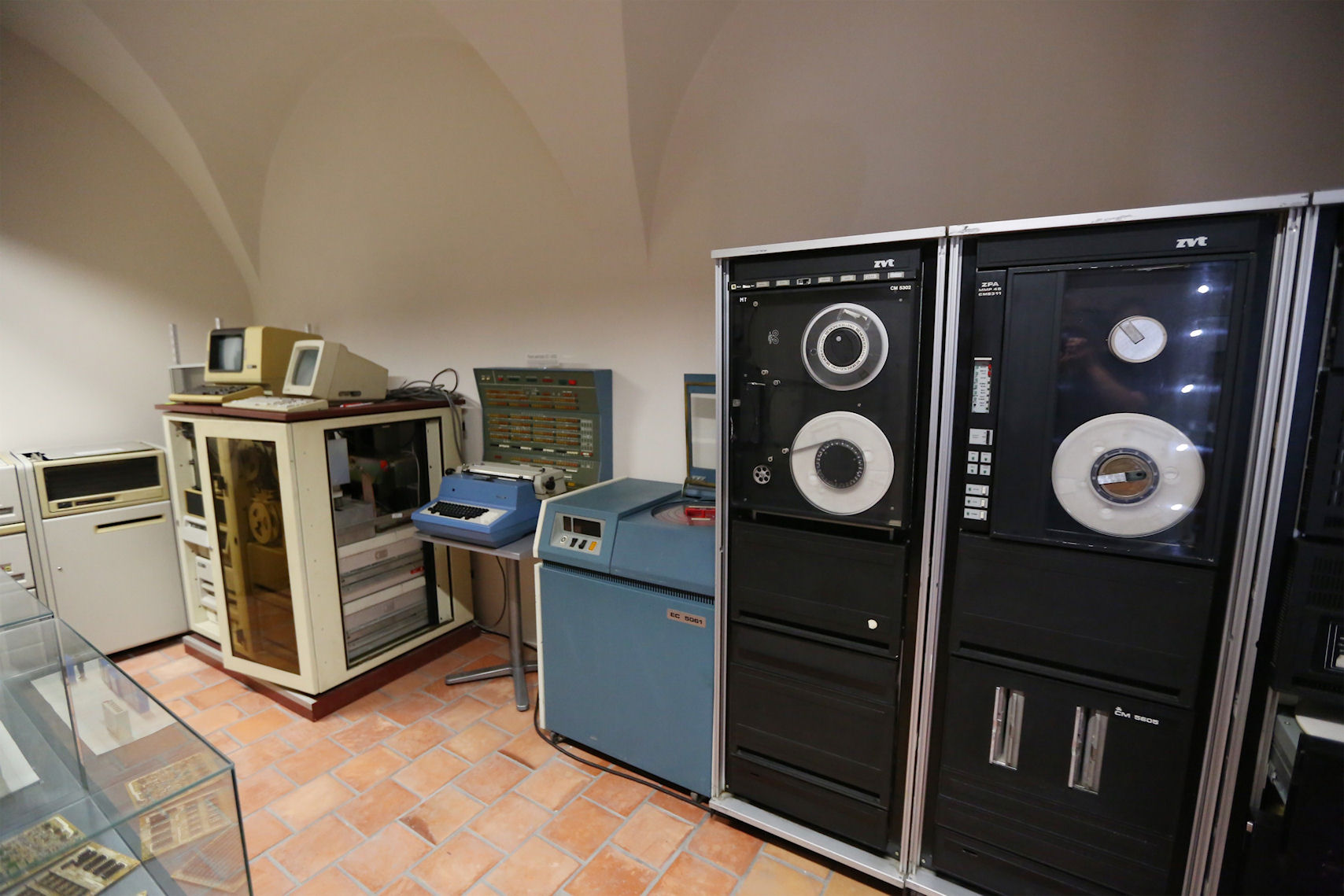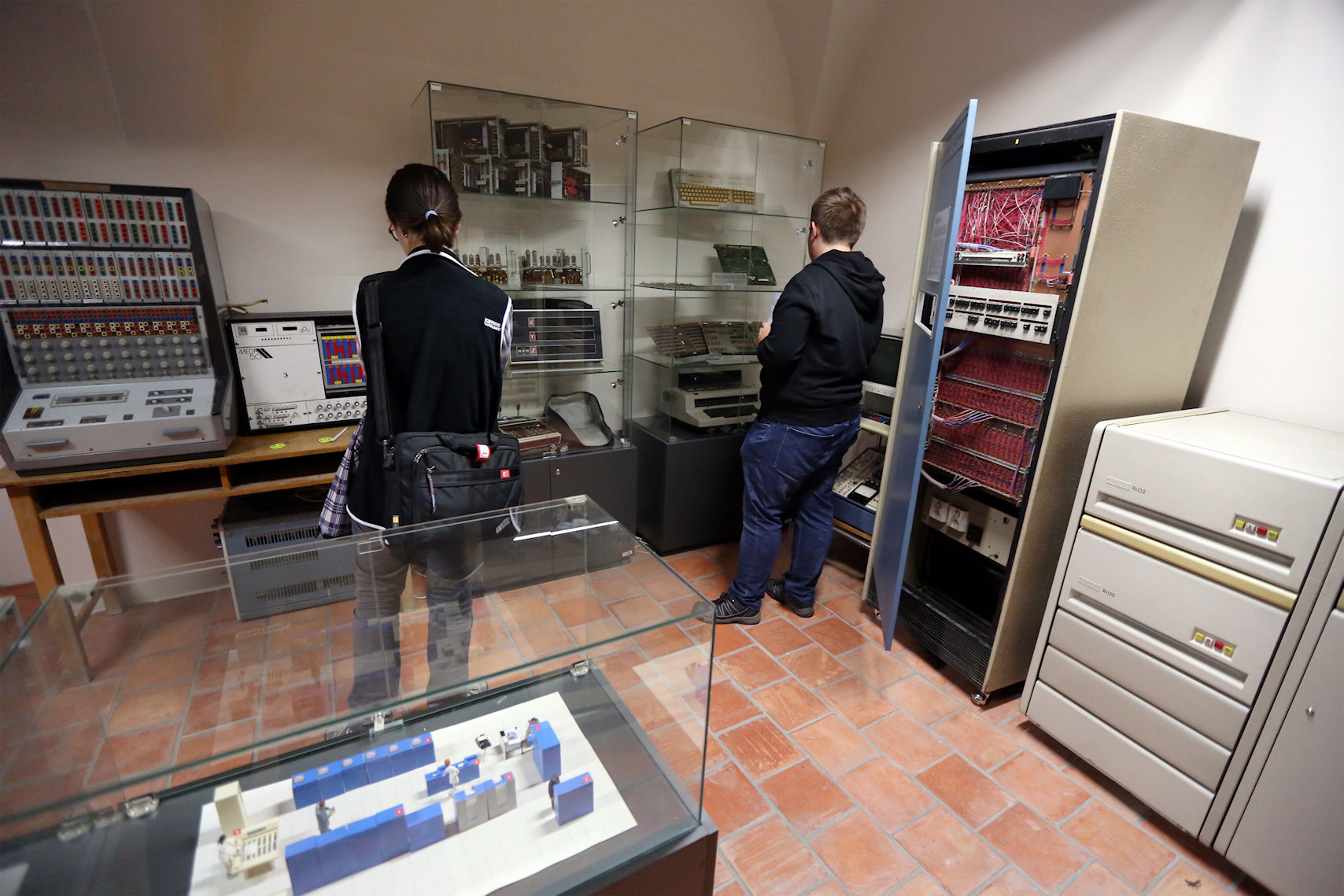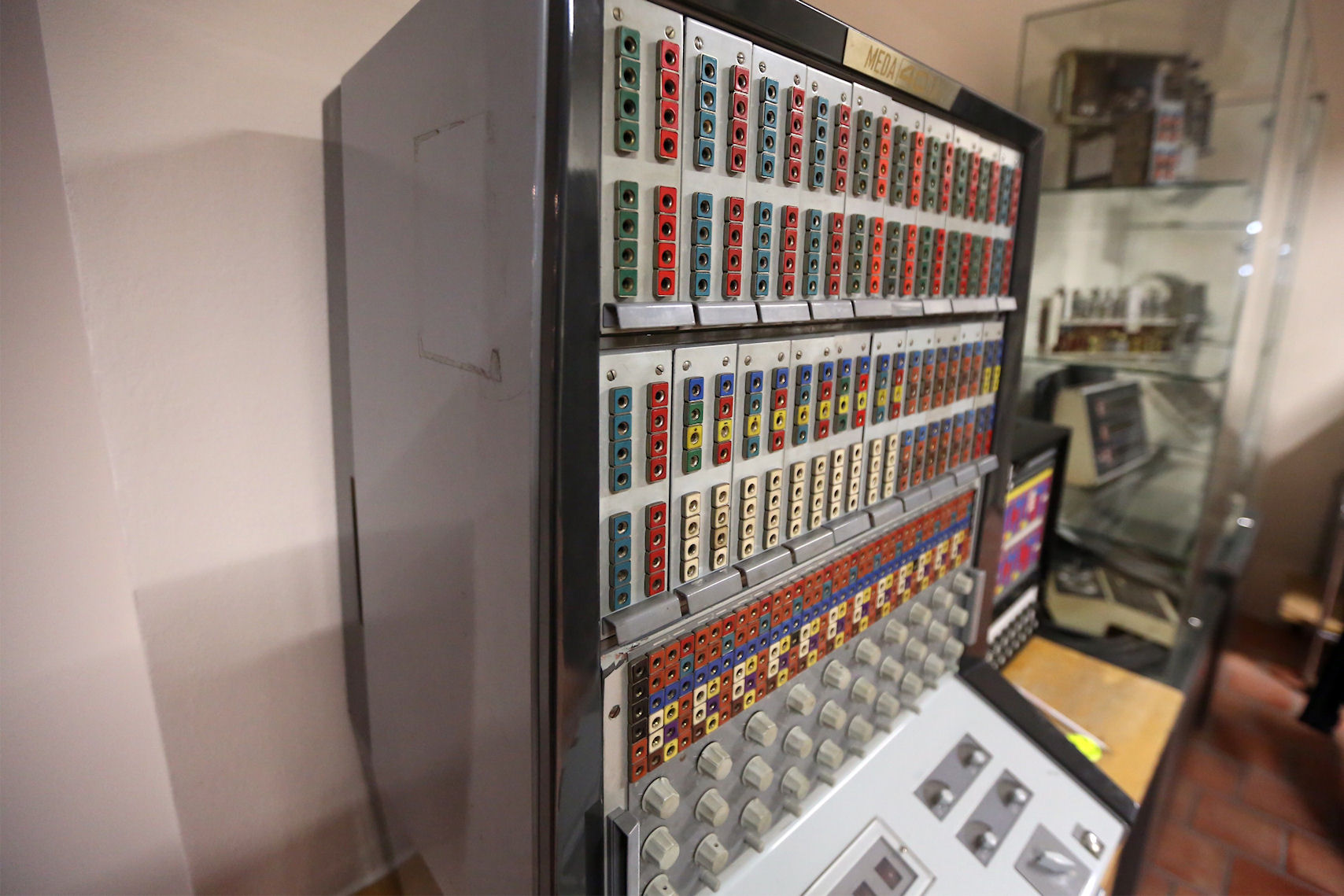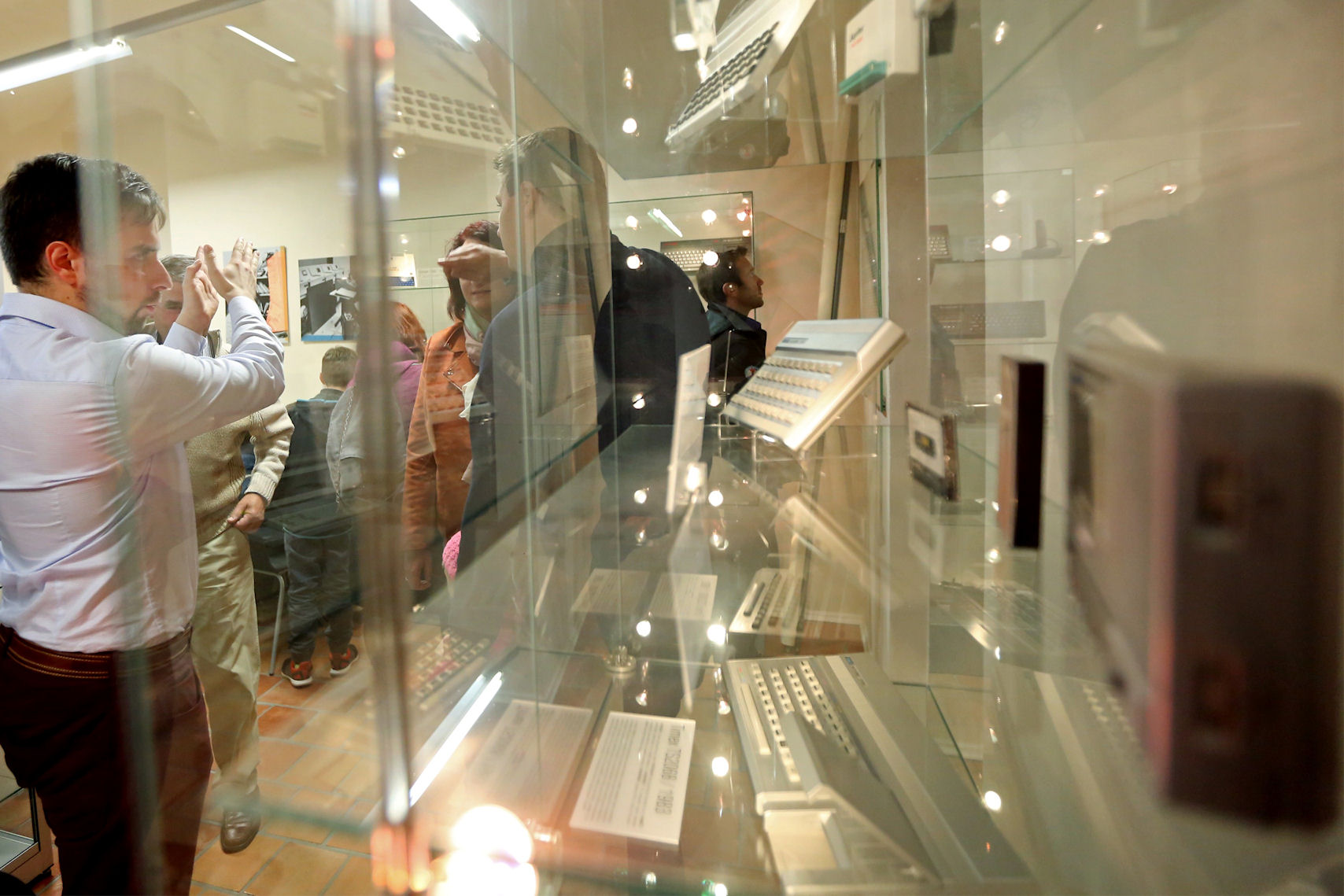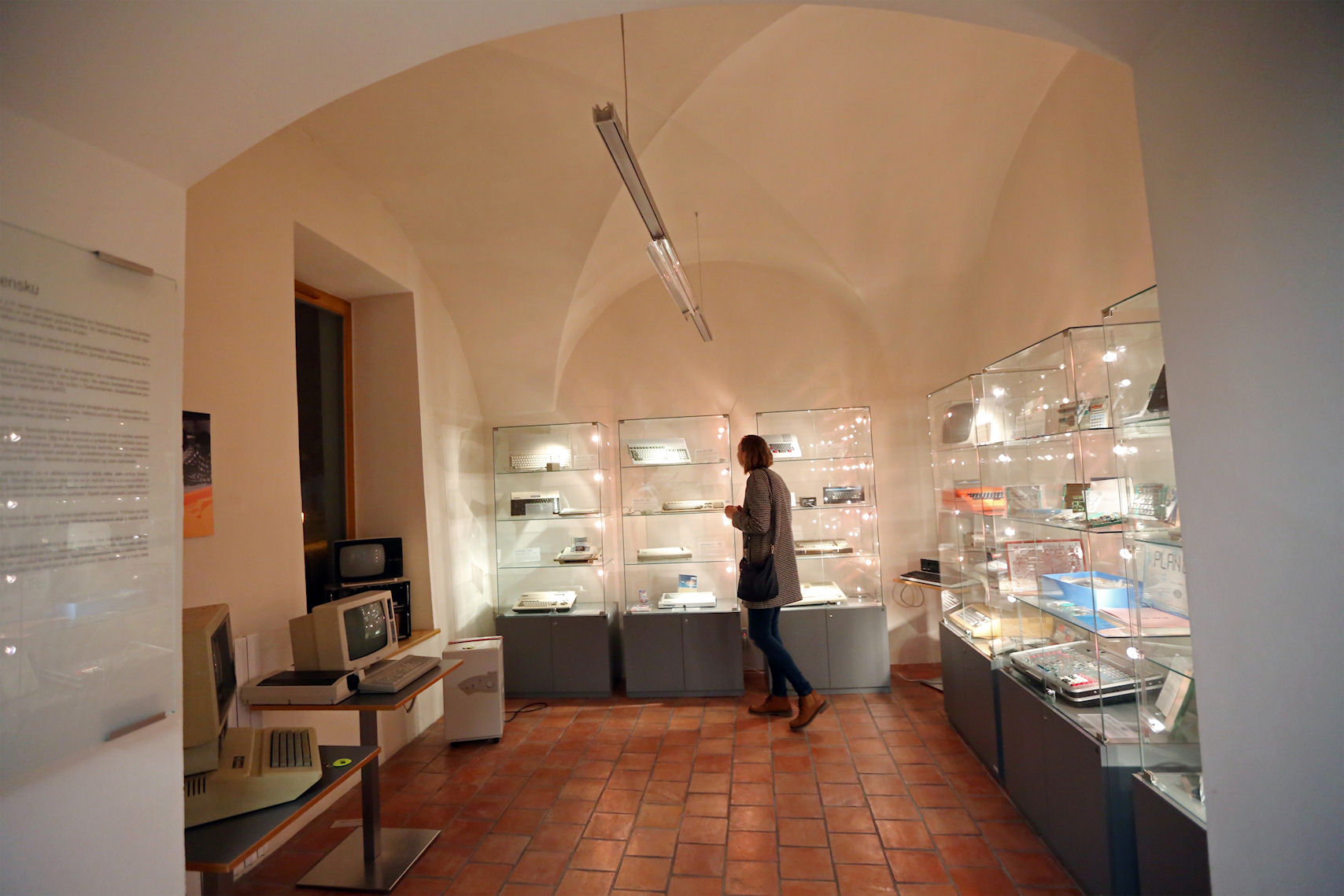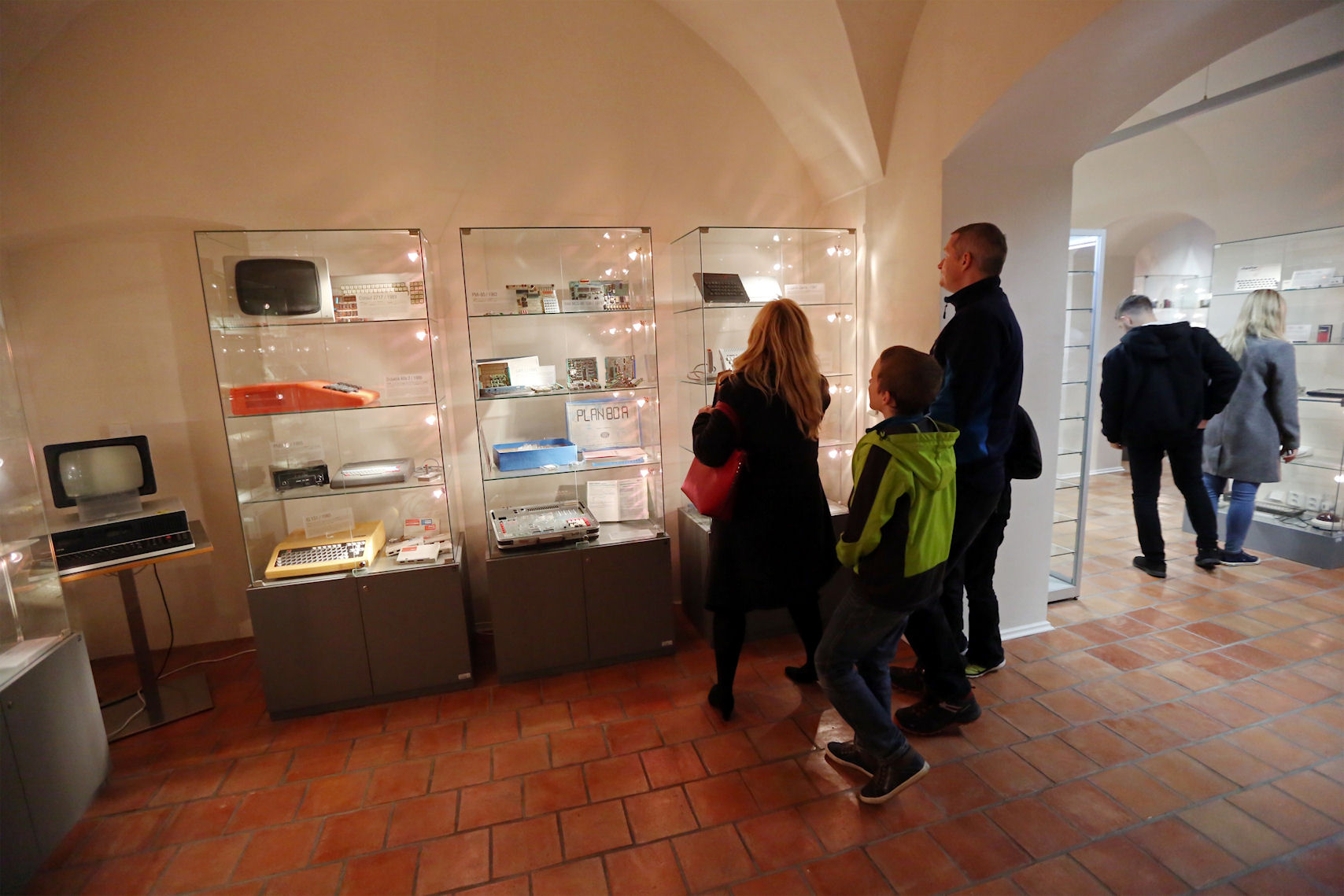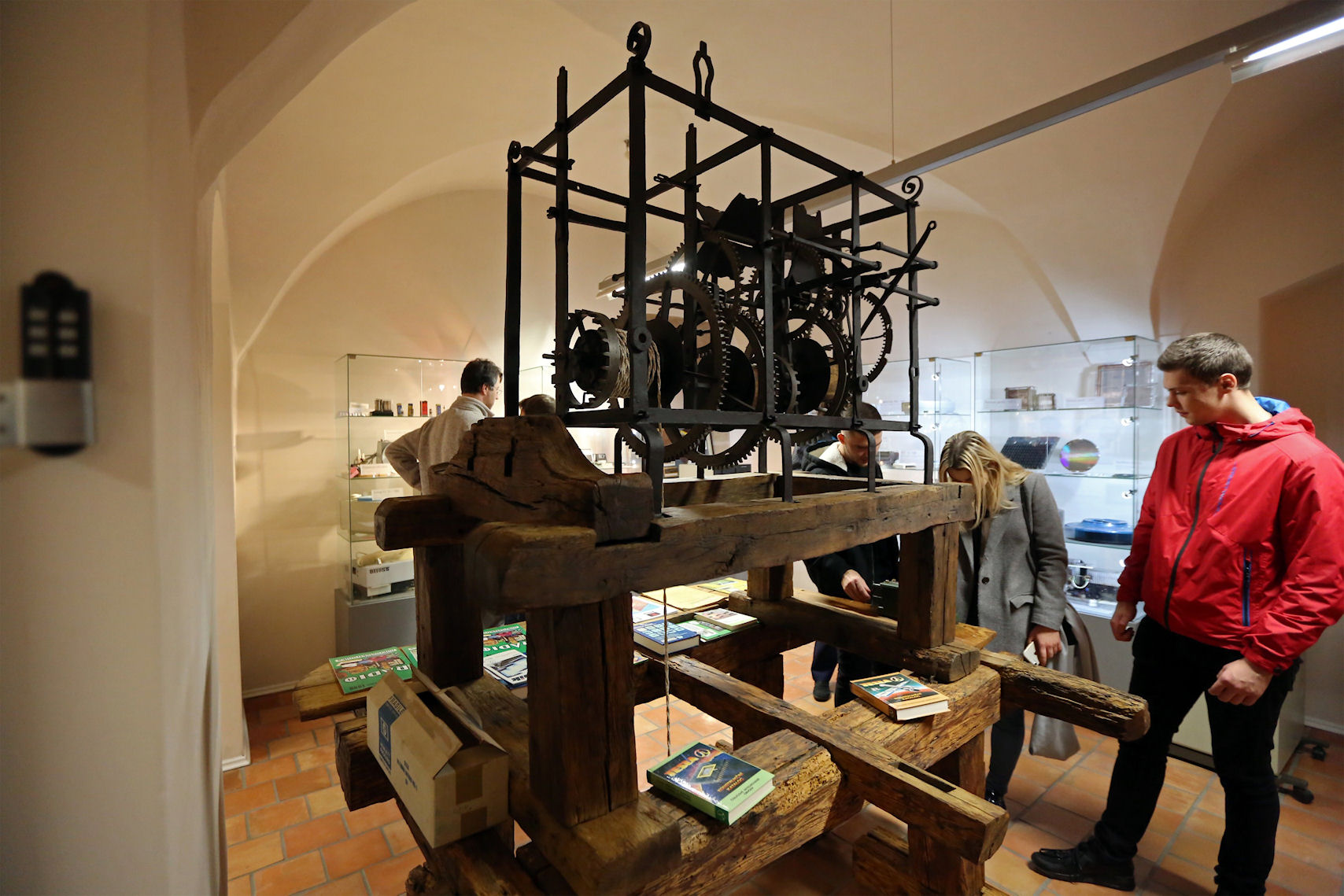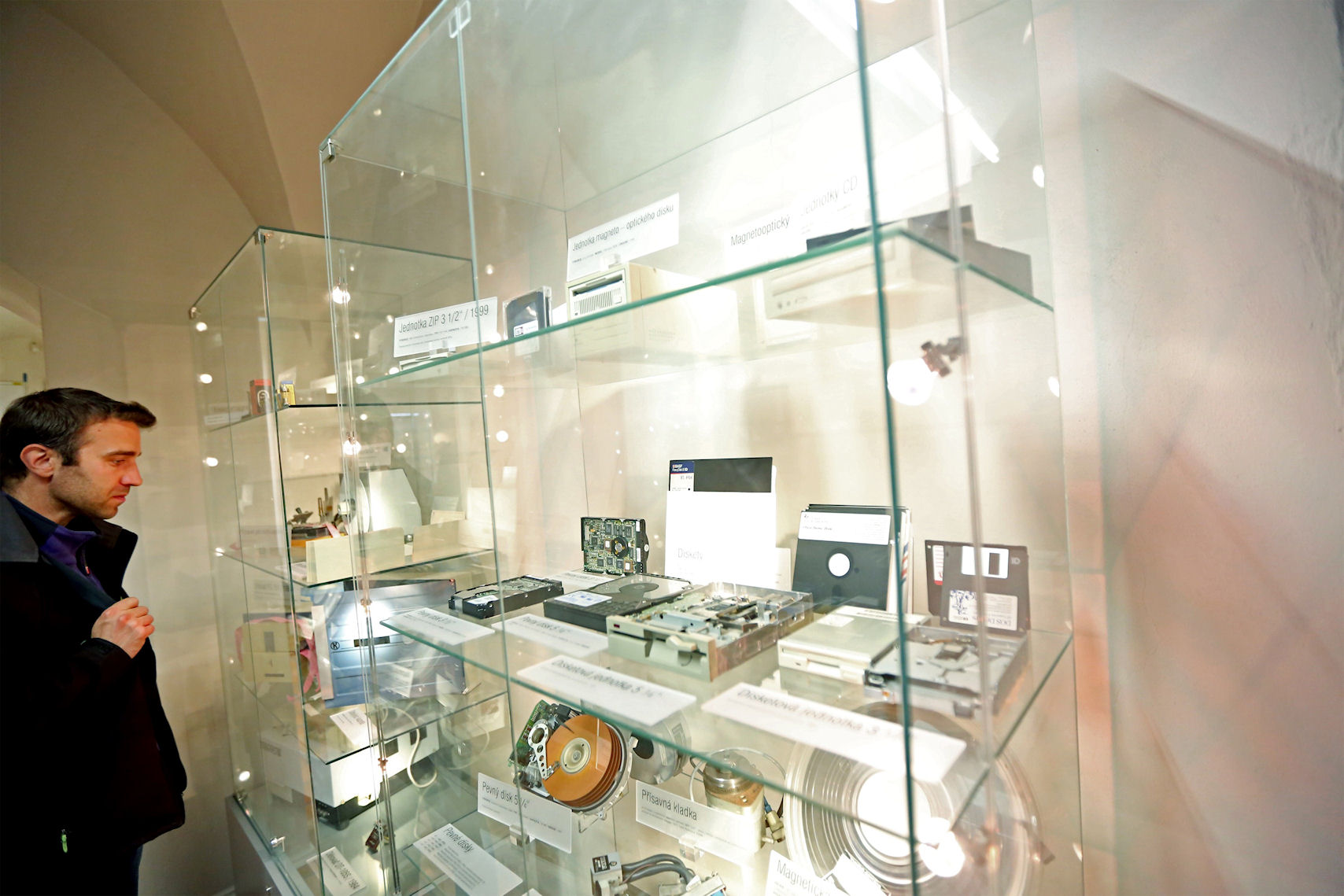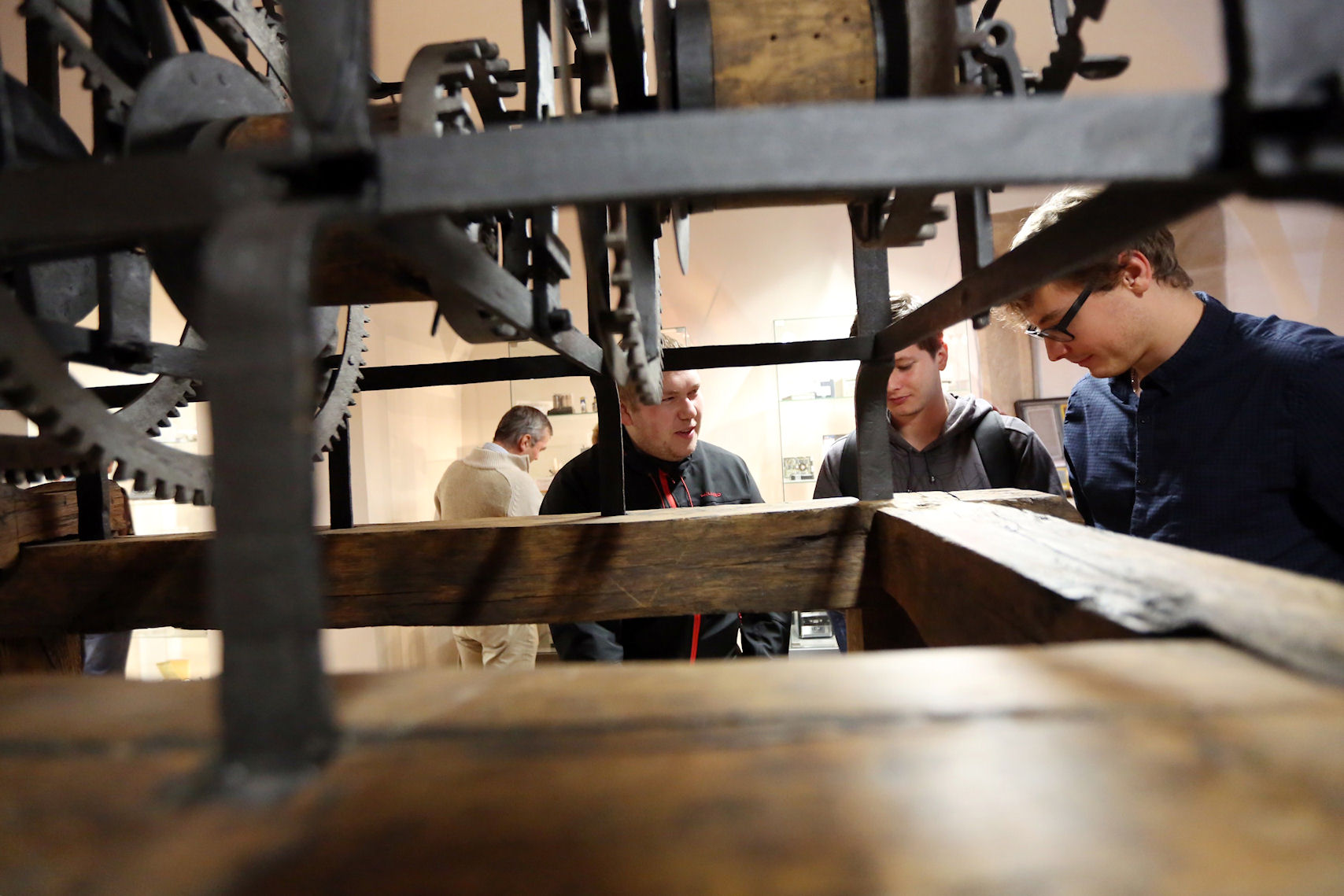Museum of computer technology
On the occasion of the 10th anniversary of the Faculty foundation, a small museum of computer technology was created at the FIT in the Božetěchov campus. It is intended mainly for educational and representation purposes, and collections are accessible to the public in conjunction with events organized for the public by the faculty (Open Days, Králova Pole Erbovní slavnosti, etc.).
Opening hours
For the public, the collections are available in conjunction with events organized for the public by the faculty
Address:
FIT VUT, Božetěchova 2 Brno, ground floor building A, room 118, entrance from the courtyard
The museum now houses nearly fifty different (predominantly personal) computers, completing about thirty dated peripheral devices, and expositions include about 60 small exhibits. Unless we count the torso of a clock machine originating from the clock tower of the Carthusian monastery in which the faculty is housed, the oldest exhibit is a mechanical calculator from the 1950s, the latest computer, made in 1991 in the former Czechoslovakia. The collection of personal computers focuses primarily on machines manufactured in Czechoslovakia or imported into Czechoslovakia whether by then-foreign trade enterprises or individually, and also on foreign computers that in some way influenced domestic computing. The exhibition shows how the technological, ergonomic and design computer development in our country has passed before the revolution and compares it with the contemporary production of the West.
Exposition of computer memories shows the evolution of technology from the memories of the first computers that were created in our country at the end of the 1950s till nowadays. It maps computer and external memory technologies such as paper and magnetic tapes, labels, and discs.
Collected collections are partly the property of the faculty, and many exhibits are also lent to collectors for long periods by private collectors and faculty staff.
In the future, it is expected to add more small exposures to enrich existing installations, and other expositions are planned to address the history of mainframe computers and minicomputers. The collection of the collection is already collected. If you have a subject at your home that is connected with museum expositions and you would like to dedicate it to the collections of the faculty, we will be very pleased. Please contact Richard Růžička.

